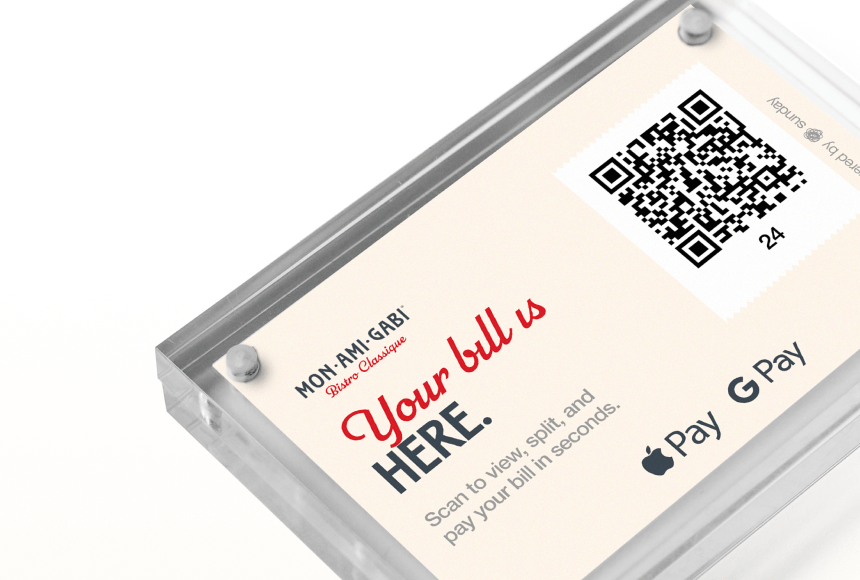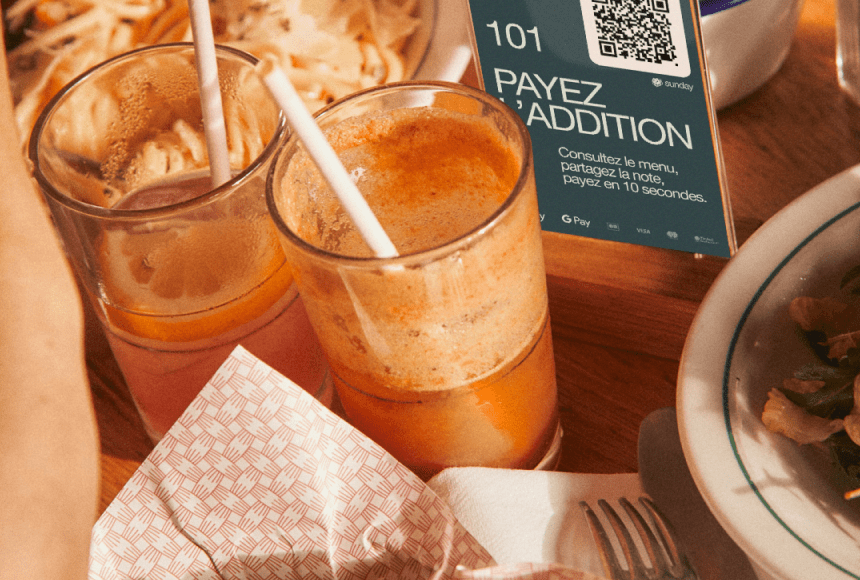
Streamline Your Restaurant’s Operations with Smart POS Solutions
Understanding the Value of Modern POS Technology
In a world where diners expect speed, accuracy, and convenience at every turn, your restaurant’s workflows matter more than ever. It’s easy to picture the scenario: a bustling dining floor, servers racing between tables, a lineup of orders piling up in the kitchen, and a queue of customers waiting to pay just as new guests are eager to be seated. Any restaurant owner knows this can be a recipe for chaos if not managed effectively.
Here’s the good news: embracing modern, smart POS (Point of Sale) solutions can help untangle the confusion. According to a recent study by the National Restaurant Association, more than 80% of restaurant operators believe that using technology such as digital point-of-sale systems has improved their overall efficiency. By automating tasks, centralizing data, and simplifying front-of-house and back-of-house communication, a smart POS can act as the anchor of your restaurant operations.
But how do you determine which features truly matter? And how do these systems translate into concrete improvements in your daily workflow? Let’s explore why smart POS devices have become an essential tool for modern restaurants, and how they can save you time, reduce errors, and help you deliver top-notch dining experiences.
Why “Smart” POS? Key Features That Drive Workflow Optimization
Once upon a time, a POS system was simply a cash register. You used it to ring up orders and, at best, track some rudimentary sales data. In today’s tech-savvy market, that old approach is akin to cooking your house specialty with only one ingredient. Modern POS solutions go far beyond ring-ups and receipts:
- Cloud-based data syncing: Access sales figures, inventory levels, and staff performance metrics in real time via secure online dashboards.
- Integration with third-party apps and delivery platforms: Automatically send orders to popular delivery services or link up with reservation apps to streamline seating.
- Contactless payment terminals: Accept chip cards, mobile wallets (like Apple Pay), QR code payments, or contactless methods to cater to guest preferences.
- Tableside ordering capabilities: Servers can take orders directly from the table using a tablet or handheld device, reducing miscommunication.
- Analytics and reporting: Generate detailed performance insights, enabling data-driven decisions.
Smart POS solutions aren’t just about fancy gadgets—they create a holistic environment that helps your staff, guests, and managers work together efficiently. When you integrate multiple functions—like inventory tracking, payment processing, and employee scheduling—into a single platform, you reduce the friction that often arises when juggling separate tools.
Improving the Guest Experience from Arrival to Checkout
While it’s easy to see the back-end benefits of a robust POS, don’t underestimate the impact it has on your guests. Smart POS terminals can enhance every stage of the dining journey. Imagine a seamless experience:
- Arrival and Seating: Hostess or server greets the guests, consults a digital floor plan on a sleek screen, and quickly assigns them to an available table.
- Order Placement: Server takes the order directly into a handheld POS device at the table. The order is instantly sent to the kitchen—no chance of scribbled notes being misread.
- Course Timing: The kitchen staff can mark dishes as they’re prepared, with the system prompting when it’s time to fire up the main course or serve dessert, ensuring dishes come out in a timely manner.
- Payment and Tip: When guests are done, they can pay right at the table through a contactless terminal or scan a QR code that leads them to a quick and easy payment screen—no waiting for the check. They can also leave a tip without any awkward fumbling with cash or swiping cards multiple times.
- After-Meal Engagement: Some systems even prompt guests to leave a quick Google review, boosting your online reputation.
Each step flows naturally into the next, much like a well-choreographed dance. And the result? Happier diners, faster table turnover, and a more efficient workflow that feels effortless to your team.
Case Study: A Neighborhood Bistro’s Transformation
Let’s take a practical example. Consider a small neighborhood bistro that used to deal with:
- Frequent order mix-ups due to handwritten notes.
- Lengthy lag times between courses.
- Bottlenecks when guests were ready to pay at the same moment.
By integrating a smart POS system:
- Order accuracy improved by nearly 30%, thanks to direct digital entry at the table.
- Service speed increased, reducing the average dining time by about 15 minutes per table.
- Tips went up because guests appreciated the convenience and transparency of the payment process.
- Google review volume rose substantially, as the POS automatically prompted diners to share feedback online.
In 12 months, these changes translated into higher table turnover, reduced labor costs, and a 15% boost in profits. While every restaurant will have its own unique journey, these types of improvements are far from uncommon when adopting modern, integrated solutions.
Steps to Evaluate and Choose the Right Smart POS for Your Needs
There are dozens of POS systems out there, each with its glittering array of features. It can be overwhelming to cut through the sales jargon and find a solution that truly resonates with your daily workflows. To avoid making a costly mistake, consider the following steps:
- Identify Core Pain Points: Do you struggle with managing orders, controlling inventory, or speeding up payments? Define your biggest challenges first.
- Set a Budget: While some systems involve monthly subscriptions and hardware costs, the long-term ROI usually justifies the expense. Know your maximum spend and expected return.
- Check for Scalability and Integrations: If you plan to add online ordering, loyalty programs, or event scheduling in the future, make sure your POS can handle those integrations seamlessly.
- Seek User-Friendly Interfaces: A visually intuitive dashboard makes training faster and helps your staff feel confident from day one.
- Read Real Customer Reviews: Online assessments from other owners can be a goldmine. Some reviews mention hidden fees or poor customer support—take note.
- Ask for a Demo or Trial: Never commit to a POS without trying it yourself. Hands-on experience can reveal whether the system fits your restaurant’s pace.
Remember, the “best” POS for your neighbor’s coffee shop might not be the ideal fit for your 200-seat steakhouse. Customize your approach to your specific context. You’ll be amazed at how quickly the right solution can turn your daily operations from stressful to harmonious.
Table: Feature Comparison to Guide Your Decision
Let’s look at a quick reference to help you decide on critical features you might need. You can customize these columns based on your restaurant’s offerings:
| Features | Benefit | Importance Level |
|---|---|---|
| Tableside Ordering | Reduces miscommunication, speeds up order process | High |
| QR Code Payments | Enhances guest convenience, faster table turnover | High |
| Inventory Management | Helps control stock, reduces waste | Medium/High |
| Employee Scheduling | Streamlines staffing, lowers labor costs | Medium |
| Delivery Integration | Expands revenue channels through seamless third-party sync | Medium |
Use this table as a starting point. Check if your potential POS platform offers each feature and rate its importance level for your own restaurant. Some solutions will cover all these bases, while others might only excel in specific categories.
How Smart POS Terminals Streamline Communication with the Kitchen
No restaurant can run smoothly when servers and kitchen staff operate as two separate islands. Communication is key. A smart POS can be the bridge that keeps everyone on the same page without the chaos of shouted orders or random slips of paper. Here’s how:
- Instant Order Transfer: The moment a server types an order into a handheld tablet, it’s visible on the kitchen display system. This eliminates confusion, speeds up prep times, and prevents the dreaded “Wait, who ordered the burger medium-rare?” problem.
- Modified Orders and Accuracy: Let’s face it: diners often have custom requests. A powerful POS that lets you easily modify orders (extra cheese, no onions, sauce on the side) reduces the risk of errors.
- Course Management: The kitchen can see which course is next and which table is waiting, so they can pace meal preparation accordingly. This ensures diners aren’t left waiting too long between courses.
- Instant Feedback Loop: If a guest changes their mind or if the kitchen is out of an ingredient, the system can notify the server in real time, allowing for immediate communication with the table.
Streamlining communication between servers and the kitchen not only prevents headaches but can also significantly reduce food waste and wait times. Plus, servers feel more confident knowing they can rely on the technology to transmit clear orders.
The Role of Data and Analytics in Day-to-Day Operations
When you hear the word “analytics,” you might think of complicated spreadsheets, but modern POS reporting tools make it simple. Data can guide your inventory orders, help you schedule staff based on peak hours, and even inform you which new menu items are hits or misses.
For instance, a smart POS might reveal that your grilled salmon entrée consistently sells out on Thursdays, prompting you to order extra ingredients mid-week. Or you could discover that your lunch service historically lags at 2 p.m., which might lead you to schedule one fewer server during that time to save on labor costs. Another possibility is tracking how many of your customers leave a tip when paying via contactless methods—these insights can help you structure your tipping policies.
If brand loyalty is important, you can integrate a loyalty rewards system, allowing you to see which promotions resonate with diners. Armed with real-time and historical data, you can tailor your menu, marketing, and staffing strategies with confidence. It’s the difference between operating on guesswork and running a business guided by facts and patterns.
Balancing Efficiency with a Personal Touch
There’s always a worry that introducing more technology could strip away the personal touch that keeps your customers coming back—after all, dining out is more than just eating; it’s an experience. The key is to maintain the warmth of human interaction while letting the technology handle tedious tasks.
Consider how you can empower your servers to become hospitality ambassadors:
- Wireless Payment Terminals: Instead of returning to a stationary point-of-sale station for every transaction, servers can linger at tables to chat, answer questions, and ensure guests are comfortable.
- Tableside Recommendations: With easy access to each table’s order history and preferences, your staff can provide more personalized suggestions—even pairing wine or dessert choices based on past orders.
- Enhanced Guest Care: With fewer administrative burdens, your team can spend more time addressing dietary needs or responding to special plans (like birthdays or anniversaries).
Technology doesn’t have to replace your servers’ genuine smiles or resourcefulness—instead, it complements their role, giving them every opportunity to shine as hospitable experts who leave guests feeling valued.
Boosting Table Turnover Without Rushing Guests
High table turnover is every restaurant’s dream for boosting revenue, but you don’t want your guests to feel like they’re being chased out. A smart POS strikes the perfect balance:
- Fewer Delays at Payment: When servers can accept payment right at the table, guests can settle up quickly. This frees up the table almost instantly for the next party waiting in line.
- Faster Order Entry: Eliminating time spent walking orders to and from the kitchen means that the entire dining experience moves at a brisk pace—without sacrificing service quality.
- Prompt Communication: If something’s out of stock, the kitchen can notify the server immediately. No running back and forth to reorder or fix mistakes, which can lead to faster meal completion.
It’s like running a relay race: each leg of the service is smooth and timely, passing the baton on with minimal friction. The outcome? More efficient use of dining room space, increased sales, and happy customers who don’t feel rushed.
Security and Compliance: Key Considerations
When payments are happening at lightning speed, you also want assurance that they’re happening securely and in compliance with industry standards. Smart POS systems often come equipped with advanced encryption processes and adhere to Payment Card Industry Data Security Standards (PCI DSS). This ensures your diners’ credit card data is safe.
Why does compliance matter so much? For starters, data breaches can be devastating—both financially and reputationally. Secondly, safeguarding your customers’ information builds trust. A secure, reputable system can also protect you from potential fraud or chargebacks.
Additionally, if you’re using a multi-location setup, consider how your data is stored and transferred. Is it stored in the cloud with robust backup measures? A well-built infrastructure will keep your data safe, even in the event of a hardware malfunction or network outage.
Encouraging Guest Feedback: The Power of Post-Check Engagement
In today’s world, online reviews can make or break a restaurant. But asking for them can feel awkward or easy to forget in the heat of a busy shift. This is where a well-designed POS system comes to the rescue. By pairing the payment process with a quick digital prompt, you can gently remind guests to share their experience on Google or other platforms.
How does it work? When a guest finishes paying via QR code on their smartphone or a contactless terminal, a pop-up can invite them to leave a short review. Many guests are happy to do it if the process is streamlined. A spike in online reviews can boost your search rankings and help prospective diners get a feel for your establishment before they even step foot inside.
And it’s not just about good reviews—constructive feedback can guide improvements. Some POS systems let you set up internal surveys with specific questions, giving you insight into diners’ thoughts on menu quality, ambiance, or service. This approach demonstrates that you value your customers’ opinions, which in turn fosters loyalty and repeat visits.
The Role of Sunday in Reinventing Payment Experiences
One real-life example of technology making payment simple is sunday, an innovative solution that turns an ordinary experience into something more engaging. By letting guests pay via QR codes at the table, you effectively eliminate the time-consuming back-and-forth of traditional check handling. Servers can focus on hospitality instead of processing payments and printing out receipts.
Beyond mere convenience, sunday also caters to the guest’s desire for autonomy: they can review their order, add a tip, and complete the transaction in seconds. Some guests even place orders or reorder beverages on their phones, opening up a new level of flexibility. Not only does this speed up table turnover, but it often translates into additional sales—the more frictionless the process, the more willing guests are to add that extra appetizer or dessert before finalizing.
And, integrated with modern POS terminals, you can tie these transactions directly to your front-of-house and kitchen operations. That means consistent reporting, streamlined tipping, and valuable sales insights all under one digital roof. This is where technology truly aligns with the best interests of diners and owners alike.
Practical Tips to Onboard Your Team Successfully
Introducing a smart POS terminal into your restaurant is similar to adding a new recipe to your menu—it takes practice and buy-in from the entire team. How do you make sure your staff embraces the change? Here are some suggestions:
- Train Thoroughly: Provide hands-on training and simple guides. Remember that some team members may be more tech-savvy than others. Pair them up for peer coaching.
- Involve the Kitchen: Don’t forget your back-of-house staff. Show them how to view orders, flag issues, and give feedback through the system.
- Set Clear Expectations: Explain how the technology can help each role perform better and faster. Emphasize benefits: fewer mix-ups, more tips, and happier guests.
- Encourage Feedback: Check in regularly and ask your team what’s working or what’s frustrating. Refine your setup continuously based on real-world experiences.
- Celebrate Milestones: Did your restaurant receive a record number of positive reviews after implementing the new system? Recognize your staff’s efforts and reward them for a job well done.
Change can be daunting, but with a well-organized rollout and ongoing support, your employees can quickly move beyond the learning curve and start appreciating the improved workflow.
Workflow Transformation Beyond the Dining Room
It’s not just about what happens on the floor. Smart POS terminals can integrate powerfully with other parts of your restaurant business. Consider:
- Inventory and Supply Chain Management: Link your POS data with your supplier’s portal so you can automatically reorder popular items when stock runs low.
- Accounting and Payroll Systems: Sync your daily sales and labor hours with your accounting software, reducing administrative tasks and human errors.
- Marketing Tools: Connect the POS with your CRM (Customer Relationship Management) platform to track loyal guests and launch targeted campaigns.
- Online and Mobile Ordering: If you offer takeout or delivery, a unified system ensures consistent menu management, pricing, and reporting.
By weaving these connections together, your restaurant becomes a tightly knit ecosystem rather than a set of fragmented tasks. You can spend less time figuring out complicated daily reconciliations or manually entering data. And yes, that means you get to spend more time focusing on delightful menu innovations or ways to woo your local community—tasks that truly matter for your brand.
Financial Benefits: What’s the ROI?
A common question: “Is it really worth the investment?” In most scenarios, a well-chosen POS will pay for itself in a year or two through:
- Increased Sales: Faster table turnover, online ordering integrations, and upselling features boost revenue.
- Reduced Error-Related Costs: Fewer missed or incorrect orders means less wasted food and fewer comped meals.
- Saved Labor Hours: Automated tasks free up your staff to focus on higher-value interactions, potentially reducing the need for extra support during peak times.
- Actionable Data: Insights from reporting help you fine-tune your menu, staffing, and promotions for optimal profitability.
Yes, it’s an investment. But in the competitive American restaurant landscape—where margins are tight and consumer expectations are sky-high—operating without robust technology may cost you far more in the long run.
Eager to Modernize Your Workflow?
Technology has undeniably changed the culinary scene. From the smallest food trucks to large-scale eateries, smart POS systems have become a staple of success. It’s no longer just about processing payments—it’s about weaving together all the threads of your restaurant into one cohesive tapestry. Whether you’re seeking to cut down on manual errors, speed up service, encourage more tipping, or simply delight your diners, an advanced POS can be your most powerful ally.
If you’re still on the fence, weigh the potential gains—both tangible and intangible. An efficient workflow means a happier back-of-house crew, more attentive front-of-house staff, and a dining experience that keeps guests returning time and again. Embrace the change, and watch your restaurant thrive like a well-prepared dish that leaves everyone satisfied.
Frequently Asked Questions (FAQ)
What is the main difference between a traditional POS and a smart POS?
A traditional POS typically handles basic payment services and may have limited data tracking. A smart POS, on the other hand, integrates a range of modern features—from cloud-based analytics and inventory management to mobile payments and delivery integrations. This connects multiple aspects of running a restaurant into a single unified system, improving accuracy and efficiency.
How can a smart POS help me reduce labor costs?
Smart POS solutions automate repetitive tasks, such as order entry, sales reconciliation, and data tracking. This reduces the need for additional staff to handle administrative duties. It also guides you in scheduling the right number of workers for each shift, thanks to real-time data on your busiest hours, ultimately lowering labor costs.
Is it difficult to train my staff to use a new POS?
Most modern POS interfaces are user-friendly and designed with quick adoption in mind. Many providers offer online tutorials, on-site training sessions, and customer support. By pairing tech-savvy employees with those less comfortable with new tools, you can speed up the learning process and build confidence among all team members.
Can a smart POS system integrate with my existing third-party apps?
Many POS providers recognize the importance of seamless integration and offer compatibility with popular platforms for delivery, marketing, or accounting. Before selecting a system, check which third-party apps and services it supports to ensure a smooth workflow.
How does a contactless payment or QR code solution improve table turnover?
With contactless payment or QR codes, the payment process happens instantly at the table. Guests don’t have to wait for a server to bring the check or handle the card multiple times. Faster checkouts free up tables more quickly, allowing you to seat new parties sooner and serve more guests overall.
Find out more today
Drop us your details below and we’ll reach out within the next 24h
“Check please” is a thing of the past.
With our integrated QR codes your customers pay in seconds, straight from their table.




